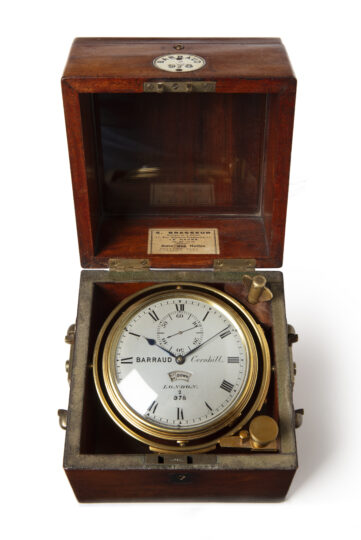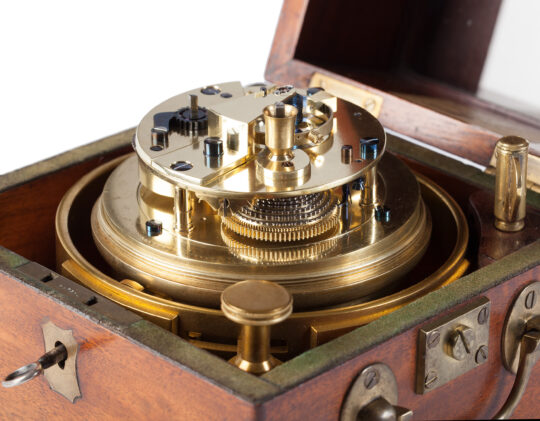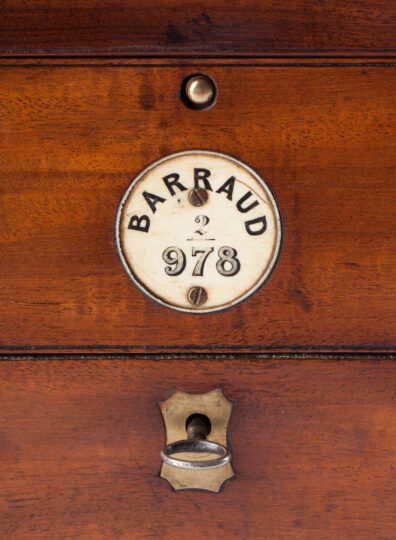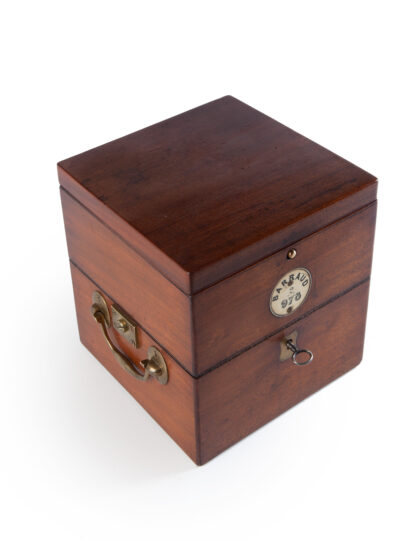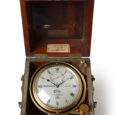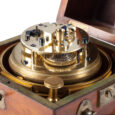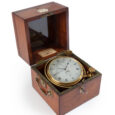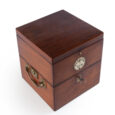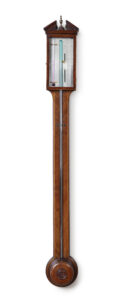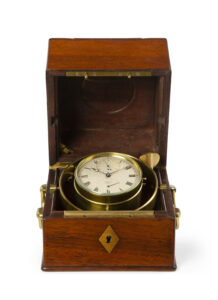MARINE CHRONOMETER Barraud Cornhill London
M&R159
MARINE CHRONOMETER
Signed: Barraud Cornhill London 2/978
Circa 1830
England
Movement
The two-day spring-driven single-fusee movement with circular plates has an Earnshaw detent escapement and compensation balance. The balance has regulation screws and a blued-steel helical spring. The movement also has maintaining power, so that the clock continues running whilst being wound.
Dial
The silvered brass dial has Roman hour, five-minute and minute divisions. The aperture below the middle indicates the power reserve, a so-called up-and-down dial (1 – 48 hours). The maker has signed and numbered the clock in the centre Barraud Cornhill London 2/978. The auxiliary ring above the middle indicates the seconds and has Arabic ten-second and second divisions. The time and seconds are indicated by blued-steel hands, the hour hand has a spade pointer.
Case
The movement is situated in a gimballed brass bowl in a three-tier mahogany case. The key is kept in a hole in the right-hand top corner next to the movement. To the left is a securing mechanism to protect the movement when being transported. When the case is closed it is possible to open the top lid and view the dial so that the time can be ascertained through a glazed window. There is a circular shaped inlay in the front with the signature Barraud 2/978.
Duration 2 days
Height 17 cm.
Width 16 cm.
Depth 16 cm.
*Price € 13500
Literature:
Tony Mercer, Chronometer Makers of the World, pp. 102-103
Cedric Jagger, Paul Philip Barraud, Ticehurst, 1979.
The maker
The Barrauds were a productive clock makers family, specialised in chronometers. Paul Philip Barraud was ‘Master of the Clockmakers’ Company’ in 1810 and 1811, his 3 sons Frederick Joseph (1785-1859), John (1790-1840) and James (1794-1876) joined the company and they were admitted to the CC in 1806, 1813 and 1815 respectively.

